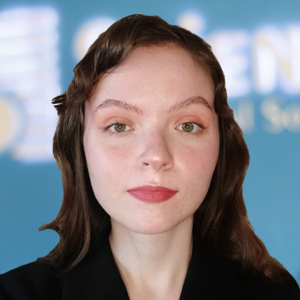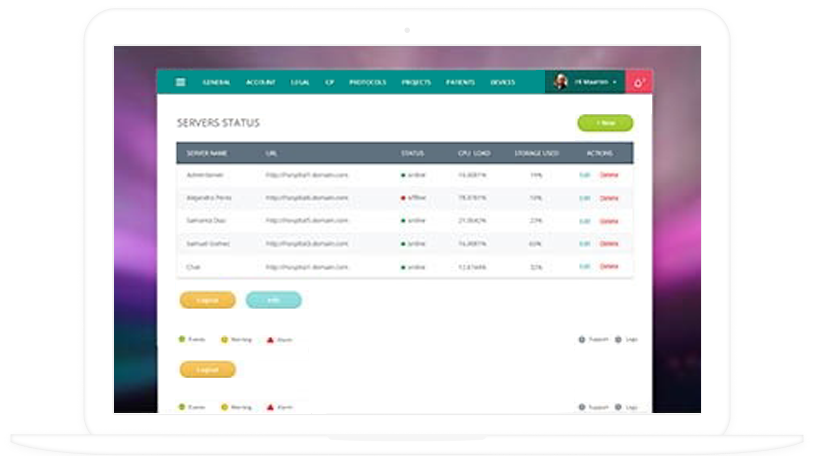Custom Remote Patient Monitoring Software
Architecture, Key Features, Investments
In medical software development since 2005 and in IoT since 2011, ScienceSoft designs and implements remote patient monitoring solutions to enable data-driven patient care.
Remote Patient Monitoring in Brief
Remote patient monitoring software enables medical staff (physicians, nurses, etc.) to track patients’ vitals and overall health state via smart medical devices. RPM solutions automate the monitoring process, help timely spot disease progression, and improve care quality.
Integrations: smart medical devices, EHR/EMR.
Costs: from $200,000 for an RPM solution with general features to $400,000 for an app with an advanced feature set. Use our free calculator to gauge the cost of your project.
Architecture of a Remote Patient Monitoring System

Smart connected devices or sensors for patient monitoring
To collect patient vitals (e.g., body temperature, blood pressure, perspiration) and transfer them using connectivity protocols (e.g., Wi-Fi, NFC) to the cloud RPM server for further analytics.
Patient interface
A mobile app enables patients to view their health parameters, log their symptoms, receive alerts on a potential medical device failure, request a video consultation with a physician or a nurse, etc.
Cloud RPM server
To store, process, and analyze transferred medical data, link collected vitals with data from symptom and lifestyle logs and PHI from EHR (e.g., medical history, prescribed medications) to spot changes in patient state and identify their causes.
Medical staff interface
To provide medical staff (e.g., nurses, care coordinators, advanced practice nurses, physicians) with access to data on patients’ health state and alert them on detected abnormalities in patients’ vitals (e.g., severe hypoglycemia, prolonged tachycardia) or possible medical device issues.
Admin web panel
To manage user role settings for medical staff and patients (e.g., enable or restrict the view of monitoring data), add and confirm virtual appointment requests, update schedules of medical staff, etc.
Key Features of a Remote Patient Monitoring Solution
The feature set of an RPM solution depends on the specific needs of healthcare organizations. For example, some may require a tailored set of features for a remote cardiac monitoring solution to effectively manage patients with cardiovascular conditions. Below, ScienceSoft’s consultants outlined the functionality commonly required by healthcare organizations:
Real-time patient health and lifestyle tracking
- Collecting patient vitals from one or several medical devices (e.g., to detect early symptoms of diseases, track chronic disease management).
- Patient log of symptoms (e.g., shiver, nausea, abnormal thirst).
- Lifestyle and physical activity log for patients (e.g., sleep time, walked distance) to help identify the cause of symptoms.
- Medication intake log for patients.
- AI chatbots interviewing patients on recent or potential symptoms.
RPM data analytics and reporting
- Analytics of patient vitals against pre-set reference parameters.
- Alerts to physicians on abnormal vitals to prioritize care delivery or a consultation.
- Alerts to a patient and a caregiver on abnormal vitals.
- Identification of trends in patients’ symptoms (e.g., to spot medication side effects, disease progression).
- Automation of RPM reports generation (for patients and medical staff) showing trends in a patient’s health state, abnormal events (e.g., cases of atrial flutter), factors influencing the patient’s health (e.g., stress, low physical activity), etc.
- In-app dashboards for physicians and patients showing patients’ vitals history and real-time measurements, analytics insights, etc.
IoT-based monitoring of RPM devices state and device configuration
- Automated integration of an RPM solution with multiple health tracking devices.
- Device failure identification in real time (e.g., by spotting unusual activity of a medical device, potential hardware failures).
- Alerts on a device failure to patients and medical staff.
- Configuration of RPM parameters.
Online communication between patients and physicians
- Virtual consultations for patients with chronic diseases and conditions to discuss abnormal vitals, symptoms, adjust a care plan.
- Messaging to get non-urgent consultations on new symptoms, medical device operation, etc.
Accessibility features
- Text-to-speech functionality for visually impaired patients.
- Voice control for patients with vision impairments, motor dysfunctions, etc.
- User-enabled switch to a large font and high-contrast app design.
Patient data security
- Encryption of RPM-collected data, telehealth appointments’ recordings, other PHI.
- Role-based access for patients, medical staff, RPM admins.
- Multi-factor user authentication.
- HIPAA and FDA regulations compliance.
Important Integrations for an RPM Solution
At ScienceSoft, we understand the importance of all-around patient health information. To achieve it, we recommend opting for the following integrations for an RPM solution:
- Smart patient monitoring devices – to collect patients’ health parameters in real time or further analysis, track treatment efficiency.
- EHR/EMR system – to access the patient health information (e.g., diagnoses, test results, chronic conditions) for physicians, log online appointments in EHR for the streamlined gathering of billing information, etc.

Why Choose ScienceSoft’s RPM Software Services
- 35 years in software development and 19 years in healthcare IT.
- ISO 13485, ISO 9001, ISO 27001 certifications.
- Knowledge of healthcare standards (HL7, ICD-10, CPT, XDS/XDS-I, etc.).
- Experience in FDA/CE registration, HIPAA and HITECH compliant software development.
- Doctor of Medicine consultant on board.
- Microsoft partner since 2008.
What makes ScienceSoft different
Driving success in healthcare IT projects no matter what
ScienceSoft develops healthcare IT solutions that reduce care delivery costs and improve outcomes, no matter the challenges posed by diverse expectations of medical staff, shifting priorities, and resistance to change.
Our Awards and Recognitions

Listed among Healthcare IT Service Leaders in 2022 and 2024
Growing faster than Amazon, Google, and ServiceNow
Recognized for reliability and trustworthiness
Recognized by Health Tech Newspaper awards for the third time

Top Healthcare IT Developer and Advisor by Black Book™ survey 2023
Best in class in medical device connectivity (2023)
A top outsourcing provider for three consecutive years
ISO 13485-certified quality management system
ISO 27001-certified security management system
What Determines Success of an RPM Solution
Relying on our 19 years of experience in healthcare IT, ScienceSoft has identified core factors influencing RPM software adoption and ROI.
In-built instructions
on syncing smart connected medical devices with an RPM application, correct medical devices use to help patients improve the quality of measurements (e.g., the accuracy of blood pressure monitoring).
based on a patient’s diagnosis, analytics of collected vitals, logged symptoms, and lifestyle changes.
RPM accessibility compliance
with Section 508 of the Rehabilitation Act and other relevant regulations to help patients navigate through the application’s features regardless of their impairments (visual, motor, etc.), level of experience with technology.
How to Get Reimbursement for RPM Services
To get reimbursement from Centers for Medicare & Medicaid Services for remote patient monitoring, ScienceSoft recommends healthcare providers to use these codes:
|
|
Investments for an RPM Solution
A remote patient monitoring solution typically costs between $200,000 and $400,000, with general systems (1 device type; feature messaging, alerts, etc.) at the lower end and advanced systems (e.g., with advanced analytics of PGHD) at the higher end. A complex RPM system with multiple types of devices is likely to cost over $400,000.
Estimate the Cost of Your Remote Patient Monitoring Solution
Please answer a few questions to help our healthcare IT consultants accurately assess your needs and provide a cost estimate quicker.
Thank you for your request!
We will analyze your case and get back to you within a business day to share a ballpark estimate.
In the meantime, would you like to learn more about ScienceSoft?
- Project success no matter what: learn how we make good on our mission.
- 19 years in healthcare IT services: check what we do.
- 4,000 successful projects: explore our portfolio.
- 1,300+ incredible clients: read what they say.

Key financial benefits
When ScienceSoft Recommends a Custom RPM Platform
ScienceSoft suggests opting for a custom remote patient management system if you need:
|
|
A wide range of connected medical device types to monitor health parameters, especially if these devices are produced by different manufacturers (buying a full suite of medical devices from one manufacturer can be rather expensive). |
|
|
Solution functionality that fully covers RPM needs of your healthcare organization. In one of our RPM development projects, besides core functionality, we implemented a home app for healthcare services and an application for extended care team to cover all required RPM use cases. |
|
|
Seamless integration with your healthcare software, including legacy solutions and tools. |
RPM Software Consulting and Implementation by ScienceSoft
Having the ISO 13485 certified quality management system, we know how to design and implement a robust remote patient monitoring system according to the requirements of the FDA and the Council of the European Union. You set goals, we drive the project to fulfill them in spite of time and budget constraints, as well as changing requirements.
Remote patient monitoring software consulting
Our healthcare IT consultants will:
- Elicit requirements for your RPM system.
- Draw up a list of features for remote patient monitoring software.
- Design a high-level architecture of the RPM system, choose a reliable tech stack, help choose monitoring devices.
- Plan integrations with FDA-approved monitoring devices and existing healthcare software (e.g., EHR).
- Calculate development costs and estimate ROI of the RPM system.
- Guide to cybersecurity and regulatory compliance requirements of HIPAA, HITECH, FDA, MDR regulations.
Remote patient monitoring software implementation
We will:
- Identify business and operational requirements for remote patient monitoring software.
- Elaborate on and prioritize features of the RPM system.
- Plan app architecture, choose tech stack, design integrations with healthcare IT systems (e.g., EHR).
- Map and plan user journeys.
- Design intuitive UX and attractive UI of RPM software.
- Develop and test RPM software with a focus on regulatory compliance (e.g., with HIPAA, HITECH, FDA, MDR regulations).
- Support the RPM system after the launch (if required).
ScienceSoft's Clients Say
To develop a mobile application that would enhance a line of Bluetooth-enabled devices for newborn and baby care, we opened an app development tender. ScienceSoft’s proof-of-concept was convincing enough for us to further the cooperation. During the project flow we were very pleased by the work of ScienceSoft’s business analysts and developers, who demonstrated high level of skills and competence.
Marina Schommer, Chairman & CEO, Montex Swiss AG

About ScienceSoft
ScienceSoft is an international IT consulting and software development company headquartered in McKinney, Texas, USA. We hold ISO 9001, ISO 27001, and ISO 13485 certifications that prove we are well-skilled to develop reliable and secure software for medical devices.



